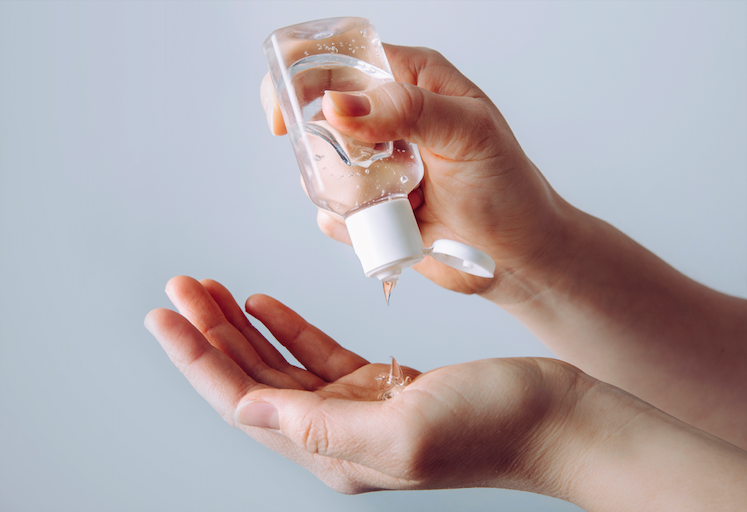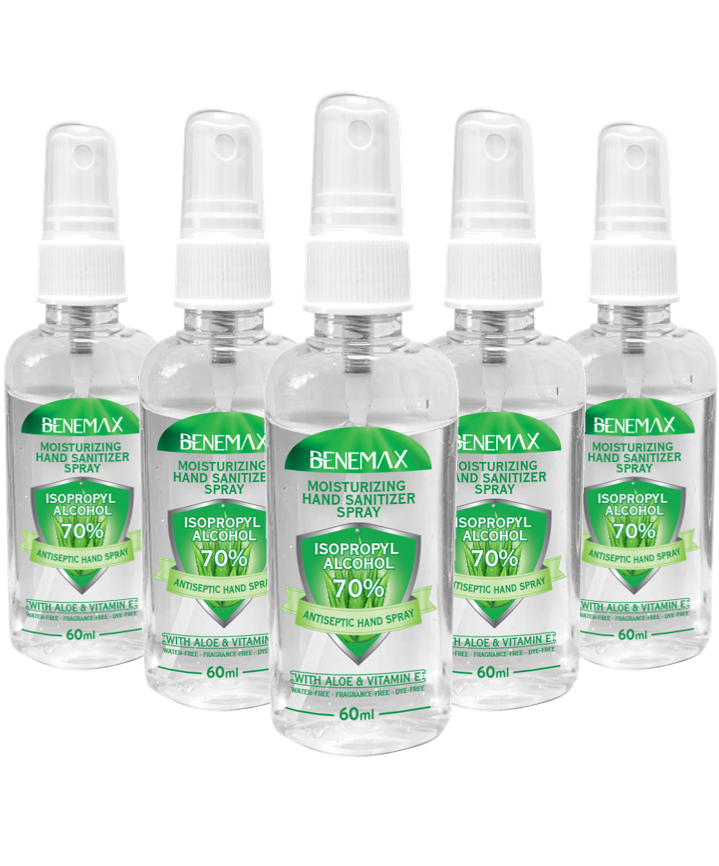Choosing The Right Hand Sanitizer

It’s safe to say that our hands have never been cleaner. One of the top public health guidelines for infection protection is (and has always been) to ensure your hands are clean. Ideally, you’re able to wash them with soap and water, but there are times when this isn’t possible. When handwashing isn’t an option, using a hand sanitizer is your next best approach.
Hand sanitizers are a liquid, foam, gel, or spray that contains alcohol and are used to clean microorganisms from the hands. Generally, they’re made from isopropanol, n-propanol, ethanol, or a blend of these. A major benefit of these alcohols is that bacterial resistance hasn’t been found, meaning they remain effective at killing bacteria even with repeated use.
It’s important to note that if the hands are greasy or visibly dirty, hand sanitizers won’t clean them and will be less effective (or completely ineffective) at removing viruses or bacteria. Think of this dirt or grease as a barrier on your skin blocking the sanitizer from reaching the microorganisms. If your hands are visibly dirty or greasy, or you have handled chemicals, you need to wash them with soap and water.
How Hand Sanitizers Work
 The alcohol in hand sanitizer performs antimicrobial activity whereby it denatures proteins. Specifically, it strips microbes of their protective coating, leaving it non-functional. In order for a hand sanitizer to “kill” a microbe, it needs to contain an effective amount of alcohol. The suggested amount varies among health agencies but generally falls within the range of 60 to 90 percent. It’s noted that the higher the alcohol content, the more effective it is at killing germs. At a minimum, a product should have at least 60 percent alcohol.
The alcohol in hand sanitizer performs antimicrobial activity whereby it denatures proteins. Specifically, it strips microbes of their protective coating, leaving it non-functional. In order for a hand sanitizer to “kill” a microbe, it needs to contain an effective amount of alcohol. The suggested amount varies among health agencies but generally falls within the range of 60 to 90 percent. It’s noted that the higher the alcohol content, the more effective it is at killing germs. At a minimum, a product should have at least 60 percent alcohol.
Additionally, you must use enough sanitizer to cover the entire surface area of your hands. For most people, a quarter-sized amount of gel is ideal. It can be easy to miss small areas such as fingernail beds, between fingers, and around the base of the thumb. Rub the product into your hands until they’re dry—don’t wipe them with a towel or rinse them off.
Common Side Effects
 Because of our current climate of infection prevention, hand sanitizers are getting more use than ever. This might leave people wondering if there are any potential health risks of which to be aware. Rest assured, with proper use, negative effects are very minimal.
Because of our current climate of infection prevention, hand sanitizers are getting more use than ever. This might leave people wondering if there are any potential health risks of which to be aware. Rest assured, with proper use, negative effects are very minimal.
The most common side effect of hand sanitizers is dry, irritated skin. Alcohol is dehydrating, so frequent use of sanitizers is likely to lead to dry, cracked skin, which can then cause skin irritations in some people. For this reason, many companies have added moisturizing agents to their formulas, such as glycerin or aloe vera. These ingredients would be listed on the label under non-medicinal ingredients.
The most serious concern linked to hand sanitizers is ingesting the product. With the increased demand of hand sanitizer, many breweries started to produce their own products, often packaged in a container that resembled a beverage bottle. Over the last year, calls to poison control centers regarding the ingestion of hand sanitizer have far exceeded previous years. Although the products have a very unpleasant taste to deter people, it wouldn’t take a lot to harm a small child. For this reason, it’s imperative that you keep products away from children and ensure an adult supervises their use.
 Though most hand sanitizers are a gel, some products are coming in spray form. The spray is more difficult to control, with trace amounts of the product lingering in the air. It’s possible that the user may inhale some of these particles. Generally, these fumes aren’t harmful, but everyone is different and some people may be more sensitive to them. If you find that you get a headache or feel dizzy or nauseated after using a spray, try switching to a gel version.
Though most hand sanitizers are a gel, some products are coming in spray form. The spray is more difficult to control, with trace amounts of the product lingering in the air. It’s possible that the user may inhale some of these particles. Generally, these fumes aren’t harmful, but everyone is different and some people may be more sensitive to them. If you find that you get a headache or feel dizzy or nauseated after using a spray, try switching to a gel version.
If you’re using a spray product, try to avoid using it in a small, enclosed space such as a car. You should also be sure to spray away from your face, or the face of whomever you’re helping.
What to Look For
Products sold in stores in Canada need to meet Health Canada’s guidelines. A quick check of the label should reveal:
- The quantity of alcohol listed as a medicinal ingredient
- Warning statements (e.g., for external use only, keep out of reach of children, stop use if irritation develops)
- Directions for use
 If you want to do some further digging, the product label should have a Natural Product Number (NPN) or Drug Identification Number (DIN). You can look this number up to see if it’s on Health Canada’s list of approved products.
If you want to do some further digging, the product label should have a Natural Product Number (NPN) or Drug Identification Number (DIN). You can look this number up to see if it’s on Health Canada’s list of approved products.
If you’re looking for a reputable brand, Benemax Health and Wellness is a prime example of a company that stocks a clinical-grade product in a variety of forms. Its formula contains an effective 70 percent isopropyl alcohol, along with aloe vera juice, glycerin, and vitamin E to help keep your skin hydrated. These products are proudly made, designed, and packaged in Canada, and the company has managed to keep them in stock throughout the high demands of 2020. From individual packets, to small spray bottles,  touchless dispensers for businesses, and even cute animal “buddies” that can be attached to a zipper or a bag, there is bound to be a sanitizer product to fit your need.
touchless dispensers for businesses, and even cute animal “buddies” that can be attached to a zipper or a bag, there is bound to be a sanitizer product to fit your need.
Stay Clean
First and foremost, hand sanitizers shouldn’t be used as a replacement for soap and water, but rather used when handwashing isn’t possible.
If you use hand sanitizer regularly, make sure you take care of your skin when you get home for the day. Wash your hands with a gentle soap to remove any traces of the sanitizer and then apply a good quality moisturizer. If your skin is in dire need, moisturize your hands and then put on a pair of cotton gloves before you go to bed.
Remember, hand hygiene is one of the best ways to prevent illness. Your hands touch a lot of surfaces over the course of a day and can easily pick up germs. If you then touch your mouth, nose, or eyes, you have unknowingly transferred the germs into your body. Be aware of your actions and keep your hands clean—whether that means washing them with soap and water or using a hand sanitizer.

